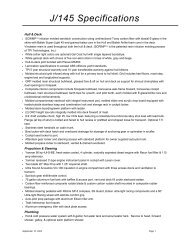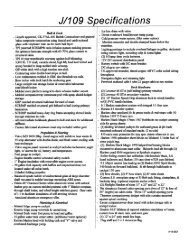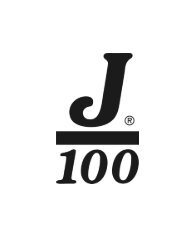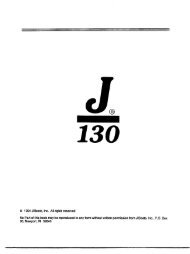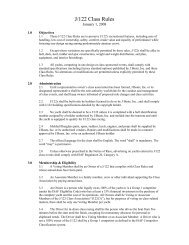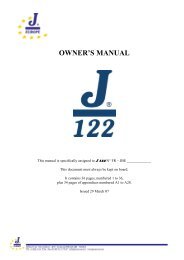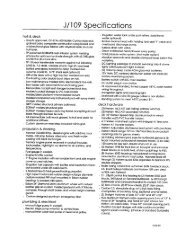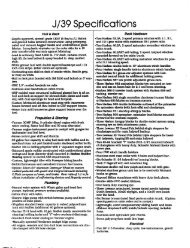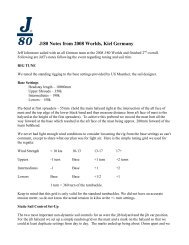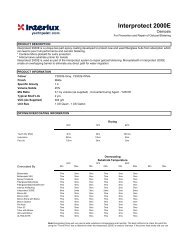J105 Owner Manual 2012.pdf - J/Owners
J105 Owner Manual 2012.pdf - J/Owners
J105 Owner Manual 2012.pdf - J/Owners
You also want an ePaper? Increase the reach of your titles
YUMPU automatically turns print PDFs into web optimized ePapers that Google loves.
J/105 <strong>Owner</strong> Guide ...................................................................................................................................................................................................................................................... 27 <br />
o<br />
o<br />
o<br />
o<br />
Coat it with an excellent silicone grease film. <br />
Check to see that the joints in the folding prop have a good coating of waterproof <br />
grease. <br />
Check that all cotter pins are bent over properly. <br />
Check that the blades are smooth. <br />
• Prop Shaft -‐ is stainless and is supported at the inboard end by the shaft coupling and at <br />
the outboard end by the strut containing a rubber "cutlass bearing." Before launching <br />
attach a "shaft zinc" to minimize corrosion. The zinc should be replaced every time the <br />
boat is hauled. Check the "cutlass bearing" periodically for wear and tear. If it is loose, <br />
replace it. <br />
• Engine/Shaft alignment is set by the builder to ensure that the engine, shaft, stuffing box, <br />
and prop are properly adjusted to minimize engine vibration. If there seems to be <br />
excessive vibration, notify your dealer and have them investigate. <br />
Fuel System <br />
The Fuel System is located centrally in the boat for effective weight distribution. It consists of the <br />
fuel tank, fill hoses and caps; fuel lines and filters and the vent. Use only Diesel fuel in the system. <br />
• Fuel Tank & Line -‐ run from underneath the port main cabin settee, under the cabin sole <br />
and up to the fuel primer pump. From there, fuel flows into the injectors. The tank is <br />
aluminum, baffled to prevent fuel slosh, and vented overboad. For a layout, please see <br />
the Fuel System diagram. <br />
• Fuel Level Gauge -‐ is located on top of the tank. The gauge reflects level (height) of fuel in <br />
the tank, not the quantity. Try to maintain a minimum level of 1/2 tank filled at all times. <br />
• WARNING-‐ IF YOU ARE MOTORING AND HAVE LESS THAN 1/3 TANK OF FUEL, BE <br />
CAREFUL OF HEELING THE BOAT TO PORT, OR YOU WILL RISK AIR GETTING INTO THE <br />
FUEL LINE. Familiarize yourself with the bleeding procedure instructions provided with <br />
the Yanmar paperwork. <br />
• Fuel Line Shut-‐Off Valve -‐ sits atop the tank at its aft end. Since diesel engines require <br />
bleeding after they have been deprived of fuel, it's important that the shut-‐off valve be in <br />
the "ON" position (lever parallel to piping) anytime the engine is started. <br />
• Fuel Tank Access Plate -‐ is atop the fuel tank and provides access inside to clean the tank <br />
or check the fuel gauge.



